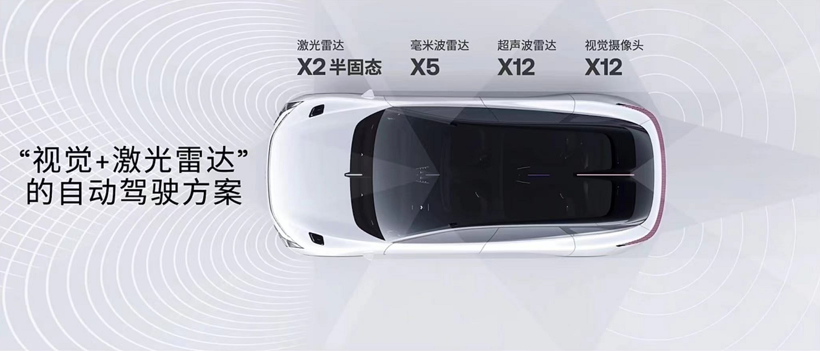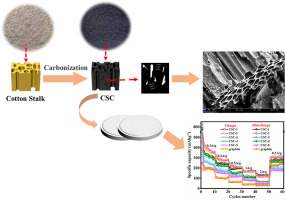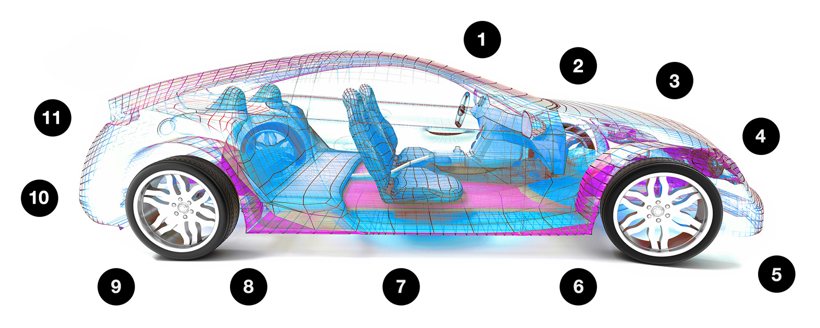Your location:Home >Automotive News >
Time:2022-06-24 20:18:40Source:
"If you compare new energy to the first half, andintelligent networkingto the second half, China's auto industry has achieved great results in the first half, but the decision is still in the second half." This is Miao Wei, deputy director of the Economic Committee of the National Committee of the Chinese People's Political Consultative Conference. A testimonial made earlier this year.
At this stage, the technology of intelligent networked vehicles has entered a critical period of implementation, which is reflected in the whole vehicle. More and more new cars are meeting the high standards of environmental perception in the era of intelligent driving by stacking high-resolution cameras. Of the 12 cameras on board, 11 are 8 megapixels.In order to meet the strict requirements of high-speed automatic driving for high-speed, delay-free and lossless transmission of camera data, in-vehicle SerDes is very important.
High-speed, low-latency, vehicle-mounted SerDes welcomes golden development period
SerDes is the abbreviation of Serializer (Serializer) and Deserializer (Deserializer), is the current mainstream time division multiplexing (TDM), point-to-point (P2P) serial communication technology; Delay, low power consumption and other characteristics, are widely used in telecommunications, consumer electronics, industry and other fields.
As mentioned above, in the era of automotive intelligent driving, especially the popularization of assisted driving/autonomous driving, environmental perception has become an emerging key technology field in the automotive industry, and the number and resolution of in-vehicle cameras are rapidly increasing.

The recently released Jidu ROBO 01; Image source: Jidu
Based on the trend of NIO ET7, Jikr 001, Ideal L9, Jidu 01, Leapmotor C01 and other blockbuster new cars equipped with 10+ cameras on average in recent years,Gasgoo Automotive Research Institutebelieves thatwith the gradual upgrade and accelerated penetration of ADAS, Superimposed on the high hardware redundancy of various car companies, it is expected that the average bicycle loading capacity is expected to be close to 5 pairs (10) by 2025.
At the same time, the penetration rate of 8-megapixel cameras is gradually increasing, and this is by no means the ultimate demand of major car companies.In May of this year, Baidu Apollo, together with Sony Semiconductor Solutions, Lianchuang Electronics and Black Sesame Intelligence, realized the world's first over 15 million high-pixel car camera module.In their view, higher pixels can make the "eyes" see more clearly, farther, and wider, and can meet the needs of more application scenarios.
But if you want to see more clearly, farther, and wider, you need not only "eyes" with higher pixels, but also "optic nerves" for lossless and delay-free transmission and "brains" for high-speed computing.
Taking the high-speed lossless and no-delay transmission requirements of an 8-megapixel camera as an example, it is generally 3264*2448=7990272 pixels.According to the RGB three-color 24bit and the camera 30 frames, the data volume generated by the camera per second is about 5.75Gbps bandwidth.
This means that in order to meet the needs of current ADAS and higher-level autonomous driving in the future, the requirements for high-speed, non-delay and lossless transmission of vehicle camera data will become more and more stringent in the future.In-vehicle SerDes is currently the only solution that can meet the real-time transmission of such high-bandwidth data.
In addition, with the innovation of in-vehicle information display methods and human-computer interaction methods, as well as the continuous improvement of in-vehicle infotainment requirements, the number and resolution of cockpit screens have shown rapid growth, and SerDes has been used for large bandwidth from the car to the cockpit screen. Data transfer, and high-speed real-time data transfer between domain controllers.
Based on this, research firm Kingpin Market Researchpredictsthat by 2026, the global vehicle SerDes market size will increase from $194 million in 2020 to $349 million, with a compound annual growth rate of 10.3% from 2021 to 2026.
However, in the eyes of industry insiders, this expectation is too conservative.
Recently, Gasgoo learned through research that Tesla, the current global leader in the field of smart electric vehicles, and Nvidia, the global semiconductor giant, both use in-vehicle SerDes chips in their respective high-end products.The higher the level of autonomous driving, the higher the number used, and the higher the resolution of cameras and displays, the higher the price of SerDes chips.
After multiple interviews and research, and synthesizing the growth rate of the global average bicycle camera and display installation, as well as the penetration rate trend of high-pixel cameras and high-resolution displays, Gasgoo Automotive Research Institute has analyzed and predicted that by2023, the global The market size of automotive SerDes chips will reach billions of dollars, and in the next ten years, this market will develop rapidly toward the scale of tens of billions of dollars.Among them, based on the development status and potential of intelligent driving in China, it is expected to account for 40%.
The market is about to take off, and domestic alternatives need to be tapped urgently
At this stage, under the background of lack of "core" and geopolitical games, the fragile global supply chain has made my country's auto industry soberly realize that in order to realize the dream of becoming a powerful automobile country, it must focus on "internal circulation".As my country's leaders said, "Key core technologies cannot be obtained, bought, or negotiated", and the voice of domestic replacement of chips is getting louder and louder.
According to CCTV, my country's chip imports in 2019 amounted to US$304 billion, far exceeding the second-ranked crude oil imports.However, under the long-term dependence on imports, my country's chip self-sufficiency rate was only about 30% in the same year, and the auto chip self-sufficiency rate was less than 10%.It has become a major hidden danger restricting the rapid, independent and controllable development of my country's science and technology.To this end, my country has vigorously developed the semiconductor industry in recent years, and is committed to achieving a chip self-sufficiency rate of 70% by 2025.
However, easier said than done?
Focusing on automotive SerDes chips, the solutions currently available in the industry are mainly: FPD-Link from Texas Instruments (TI), GMSL from Maxim Semiconductor, and AIM (hereinafter referred to as AIM). Smart) AHDL, Inova Semiconductors' APIX and Rohm's Clockless Link followed.
Among them,Texas Instruments (TI) and Maxim Semiconductor (Maxim) almost monopolize the global car display SerDes and car camera SerDes market.There are only a handful of local players under the high technical barriers.
Investigating the reason, industry experts pointed out that,on the one hand, domestic related technologies started late, not only the vehicle SerDes chip, but the entire semiconductor industry's preparation process is far behind;secondly, the lack of talents; thirdly, thevehicle SerDes chip is compared with industrial-grade chips. , the requirements are more stringent, including the electromagnetic environment of the vehicle, the working temperature environment, PPM, etc., and the requirements for life, safety, and reliability are higher.
Based on this, for domestic companies focusing on the field of automotive SerDes chips, these three problems have become obstacles to their domestic breakthroughs.
The dilemma does not stop there. The current SerDes solutions are essentially dedicated, which means that to achieve the combination of components, a unified chip supplier must be adopted.
In order to break this limitation, BMW Group, together with Continental Group, NXP and other automotive and semiconductor giants, established the ASA (automotive SerDes alliance) alliance in 2019, aiming to formulate unified standards.However, the above-mentioned Texas Instruments and Maxim Semiconductor were not involved.
In addition, the MIPI AWG (Automotive Working Group) established by several semiconductor companies in 2018 focuses on providing input and coordination on requirements to ensure that MIPI meets the needs of the automotive industry.Among them, Israeli chip company Valens Semiconductor is the first company to launch MIPI A-PHY technology, and has cooperated with Japan's Sony Semiconductor and China's Sunny Optical to apply it to next-generation image sensor products and camera modules. .According to the plan, the first vehicles using MIPI A-PHY components are expected to go into production in 2024.
It is worth affirming that, with the long road of domestic vehicleSerDes .Many industrial capitals are optimistic about Kangzhi, such as RuifacSemiconductorandWeir Shares jointly developed by Jinglue Semiconductor,etc., so that more people see the hope of local vehicle SerDes chips.
Among them, Kangzhi, founded in 2017,has mass-produced its first-generation products based on self-developed and innovative high-speed digital-analog hybrid circuit technology and AHDL (Automotive High Definition Link) transmission and real-time two-way communication protocol with complete intellectual property rights In the past two years,the second-generation chip was mass-produced in March this year andhas beenmarketed.
As far as Gasgoo is concerned, the first generation of Kangzhi has shipped nearly one million chips, and the new second-generation vehicle SerDes chip can reach up to 6Gbps. Inthe car,Kangzhi has become one of the few car SerDes chip manufacturers in China that can independently develop and ship them in batches.
There is no doubt that for local car core companies, the current is an era full of opportunities. The inclination of industrial capital and the shortage of chips provide local car core companies with capital and time to develop and catch up.
Compared with foreign-funded enterprises, it is closer to the needs of the domestic automobile market, and can provide more cost-effective products. At the same time, it has more agile response capabilities, a more open development model, and product capabilities that do not lose to the international level, allowing local car core enterprises to gradually emerge. .
At present, the wave of automobile intelligence and digitization is turbulent, and intelligent driving is rapidly evolving from ADAS to high-level autonomous driving. However, as mentioned above, in order to meet the strict standards of current and future autonomous driving for driving conditions, in-vehicle communication The link network must maintain high-speed lossless, low-latency, and high reliability. These requirements have become the rigid requirements of the next-generation vehicle electronic architecture.
In this context, although the automotive SerDes chip is relatively small compared to the huge semiconductor market, it should not be slack.China is already the world's largest market for intelligent driving products, and we believe that with the "starting" of local core companies represented by Kangzhi, while breaking the monopoly of foreign capital and filling the gap in the domestic industry, it will further empower the digital transformation of car companies. And help local chips achieve a real rise.
Statement: the article only represents the views of the original author and does not represent the position of this website; If there is infringement or violation, you can directly feed back to this website, and we will modify or delete it.
Preferredproduct
Picture and textrecommendation
Hot spotsranking
Wonderfularticles


2022-06-24 20:05:26

2022-06-24 20:05:03



Popularrecommendations
